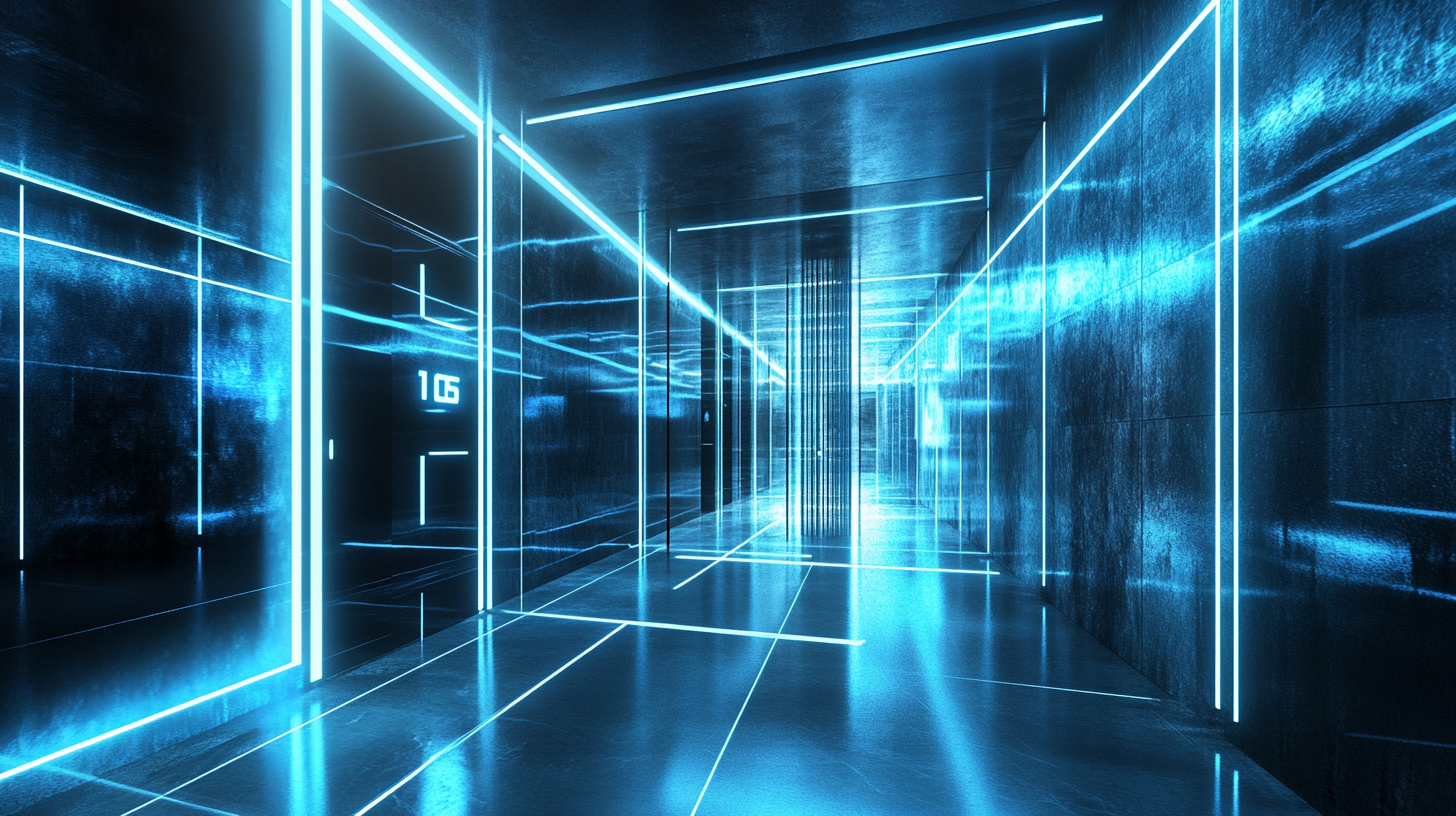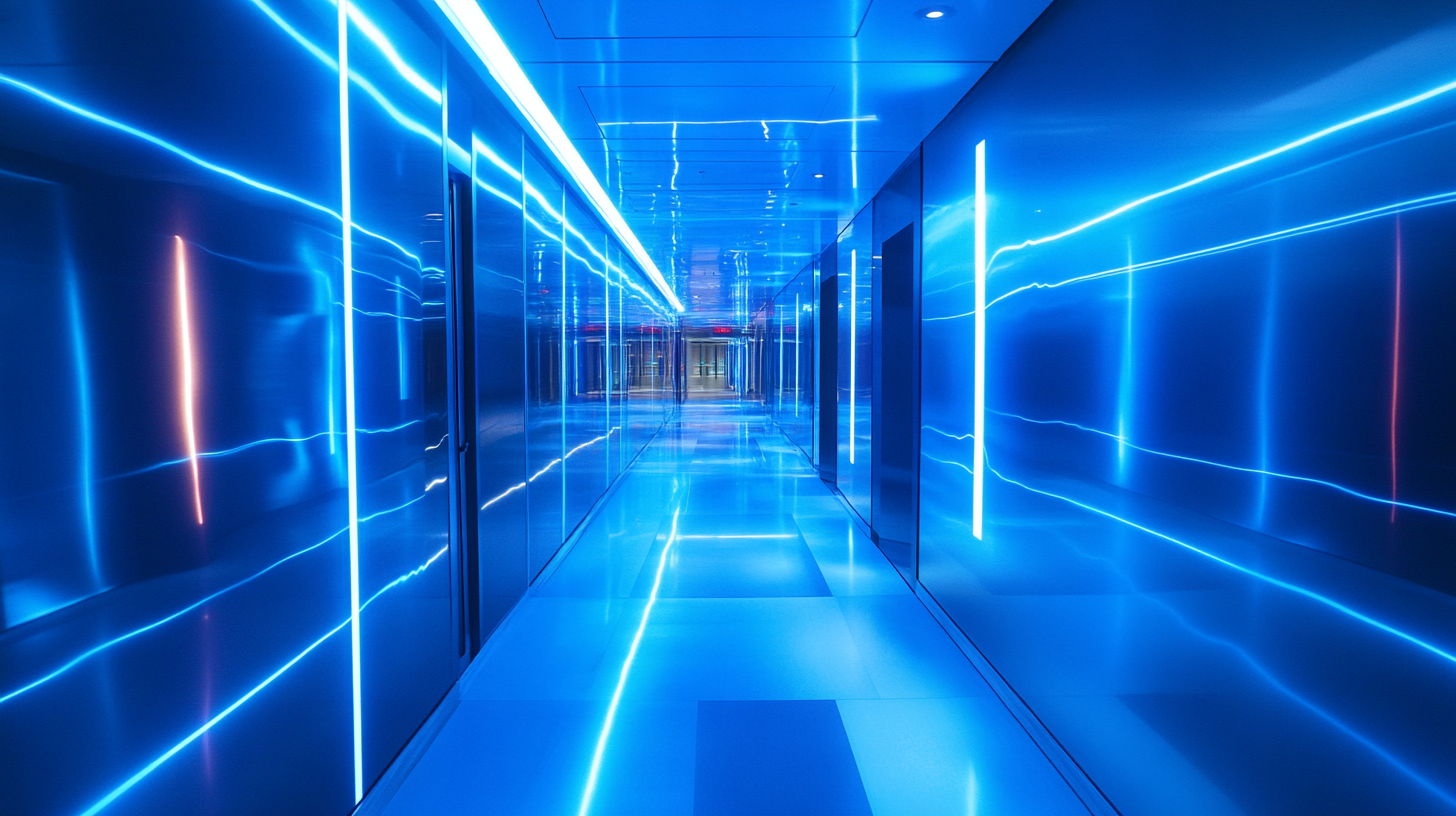
Future Forward Exploring the Best Indoor LED Trends Shaping 2025 Technology Landscape
As we look toward 2025, the landscape of indoor lighting technology is undergoing a remarkable transformation, propelled by advancements in Indoor LED solutions that are not only enhancing aesthetic appeal but also revolutionizing energy efficiency and sustainability. This blog, "Future Forward: Exploring the Best Indoor LED Trends Shaping 2025 Technology Landscape," aims to delve into the cutting-edge innovations that are setting new standards in the realm of indoor lighting. From smart LED systems that integrate seamlessly with home automation to dynamic color-changing fixtures that adapt to our moods and activities, the future of Indoor LED technology is brimming with possibilities. Join us as we explore the best practices, emerging trends, and the implications of these advancements for both residential and commercial spaces, paving the way for a brighter, more sustainable future.

The Rise of Smart LED Solutions: Enhancing Energy Efficiency and Control
As we move towards 2025, the technological landscape is increasingly dominated by smart LED solutions that promise enhanced energy efficiency and greater control. According to a recent report from the International Energy Agency, the global market for smart lighting is projected to reach $24.5 billion by 2025, driven by the demand for more sustainable and intelligent lighting systems. These advancements not only reduce energy consumption by up to 80% compared to traditional lighting but also allow users to customize their lighting environments to fit their needs seamlessly.
Tips for maximizing energy efficiency with smart LED solutions include utilizing motion sensors to automatically adjust lighting in response to room occupancy and leveraging smart controls that can be integrated with existing home automation systems. Additionally, scheduling lights to turn off during peak hours can significantly lower energy costs, contributing to a greener footprint.
Moreover, emerging technologies such as IoT-enabled lighting systems offer real-time monitoring and data analytics, helping businesses make informed decisions about energy use. A study by the U.S. Department of Energy highlights that the implementation of smart LED systems can lead to a 47% reduction in energy costs for large facilities. By embracing these innovations, both residential and commercial spaces can harness the power of smart LEDs to create a more sustainable future.

Exploring the Role of Biophilic Design: Integrating Nature in Indoor Lighting
As we look toward 2025, the intersection of biophilic design and indoor LED lighting emerges as a transformative trend in architecture and interior design. Biophilic design emphasizes creating a connection between indoor environments and nature, promoting well-being and productivity. By integrating elements like natural light, organic materials, and plant life into indoor spaces, designers aim to enhance the user experience, making interiors not just functional but also rejuvenating.
LED technology plays a pivotal role in this design philosophy. With their versatility and energy efficiency, LEDs can mimic natural light spectrums, illuminating spaces in a way that brings the outside in. Adjustable LED settings allow for the customization of light intensity and color temperature, enabling spaces to reflect different times of the day, thereby promoting a more dynamic and health-conscious environment. Integrating greenery with smart lighting systems can further elevate the biophilic experience, creating an ambience that nourishes both mind and body. As we move forward, the combination of biophilic design and advanced indoor LED technology is set to redefine our understanding of space, health, and sustainability.
OLED vs. Traditional LED: Understanding the Performance Metrics and Market Trends
The competition between OLED and traditional LED technologies is intensifying as we approach 2025. With the rise of domestic LED chip manufacturers, China's focus on advanced technology and market growth has shifted the balance. The country's commitment to improving LED chip capabilities has positioned it as a significant player in the global market. While traditional LEDs have long been the standard for display technology, the new wave of Mini LED and Micro LED innovations is poised to revolutionize the landscape. These advances come with notable cost reductions, making high-end display options more accessible.
Meanwhile, OLED technology continues to capture attention, especially in the mobile device sector. Its growth trajectory is impressive, though challenges remain, particularly in closing the gap with leading producers. The ongoing development of flexible OLED panels is set to redefine user experiences across various applications, from smartphones to large-screen displays.
The industry is witnessing a clear shift as Mini LED applications, both in backlighting and direct view displays, see rapid adoption. With significant investments in research and development for Micro LED technologies, the race is on to determine which display technology will ultimately dominate the future.
Shifting Consumer Preferences: The Demand for Sustainable and Eco-Friendly Lighting Options
As we look ahead to 2025, the shift in consumer preferences towards sustainable and eco-friendly lighting options is becoming more pronounced. With heightened awareness of environmental issues, consumers are actively seeking out LED lighting solutions that not only reduce energy consumption but also minimize carbon footprints. This demand has prompted manufacturers to innovate, integrating advanced technologies that enhance efficiency while utilizing recyclable materials in production processes.

Moreover, the aesthetic appeal of eco-friendly lighting has transformed the market landscape. Today's consumers are not just focused on functionality and energy savings; they are also looking for designs that complement their lifestyles. LED lights now come in various styles, colors, and smart features, allowing users to customize their lighting experience while adhering to sustainable practices. This perfect blend of sustainability and design is expected to dominate the technology landscape in 2025, reinforcing the message that responsible living can be both stylish and effective.
Impact of AI and IoT: Revolutionizing Indoor Lighting Management in Workspaces
The advent of Artificial Intelligence (AI) and the Internet of Things (IoT) is reshaping the landscape of indoor lighting management, especially in workspaces. According to a report by MarketsandMarkets, the global smart lighting market is expected to grow from USD 9.8 billion in 2020 to USD 26.5 billion by 2025, driven by the integration of AI and IoT technologies. These advancements allow for real-time monitoring and automation, leading to enhanced efficiency and substantial cost savings. By utilizing AI algorithms, businesses can analyze usage patterns and adjust lighting based on occupancy, ensuring optimal energy consumption.
Incorporating IoT into indoor lighting systems also offers significant advantages in terms of connectivity and user convenience. Smart sensors can provide data on light intensity and environmental conditions, enabling businesses to create customized lighting settings tailored to individual needs. A study by McKinsey revealed that organizations implementing smart lighting solutions can reduce energy expenses by up to 60%.
- Utilize AI-based lighting management systems to automate adjustments based on occupancy, maximizing energy savings.
- Invest in IoT-enabled smart sensors to gather data and optimize your workspace lighting, enhancing both productivity and comfort.
- Regularly review your lighting management strategy to stay aligned with emerging technologies and maximize ROI.
